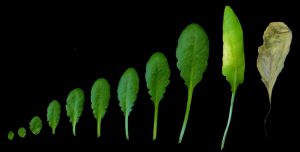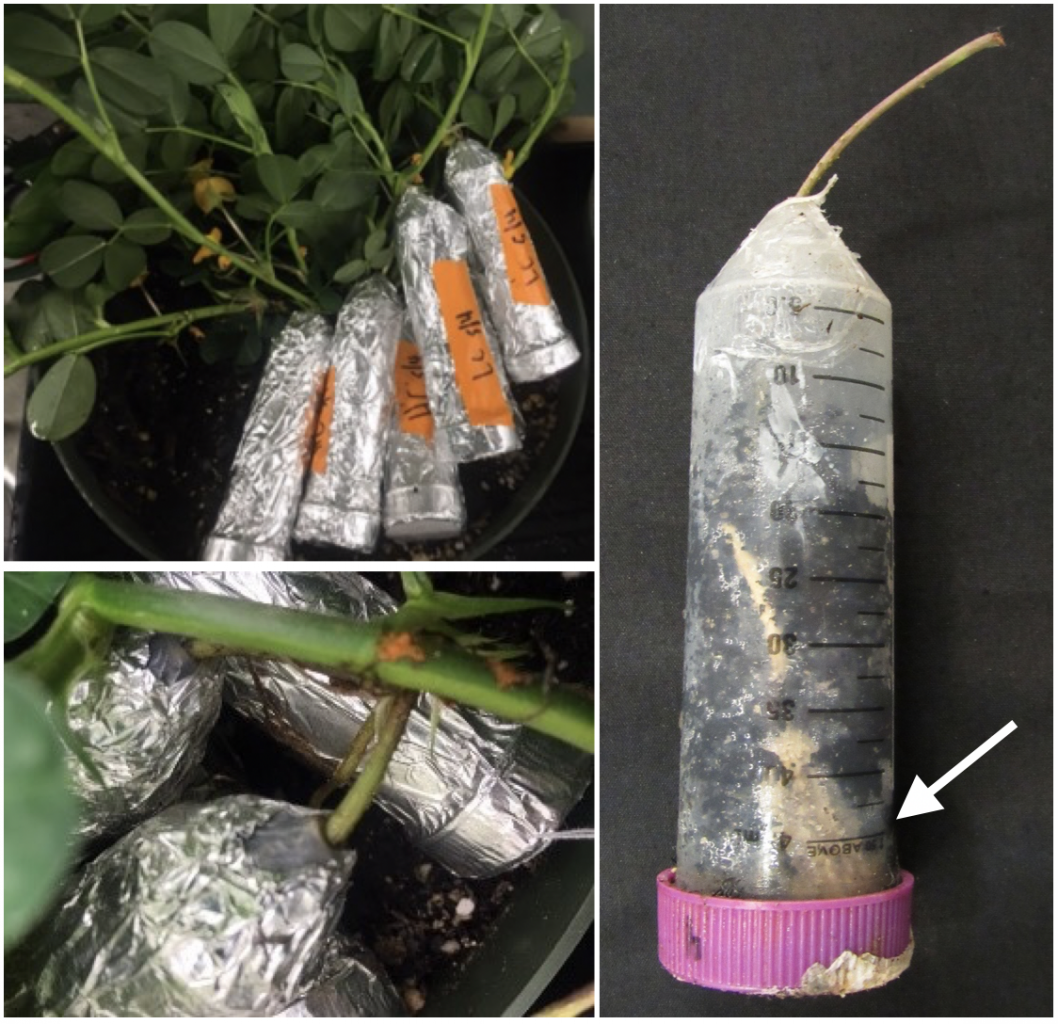Plant cells are assigned to distinct physiological programs based on their spatial-temporal position on a developing shoot and the surrounding biotic environments. Our long-term research goal is to provide a mechanistic understanding of the crosstalk between defense and development by dissecting the temporal-spatial immune response in plants. We focus on three major questions related to this theme using genetically tractable pathosystems.
1) What are the molecular mechanisms of Age-Related Resistance (ARR)? The age-associated change in immunity is present in plants as well as in animals where it is known as immunosenescence. Despite a long history of describing ARR, the molecular mechanism underlying this phenomenon remains underexplored. This project will not only fill the conceptual gap in understanding temporal organization of defense response in plants, but also shed light on the link between age and immunity in animals including human.

Figure: the growth and senescence of an Arabidopsis leaf.
2) How biotic stresses influence tissue regeneration? Plants have the profound ability to regenerate a new organ or even an entire seedling from a small piece of tissue. This process of tissue regeneration is a foundation for modern agriculture and horticulture. The propagation of many fruits and vegetables heavily relies on techniques involving tissue regeneration, such as grafting, tissue culture, and rooting from stem cuttings. We are investigating how plant regeneration occurs under the influence of microbial pathogens, which are constant threats to our agriculture.

3) How the microbial community in soil shape the availability of nutrition to peanuts? Georgia is the leading state in peanut production. Calcium is an essential nutrient for peanut development and an effective agent in enhancing resistance against soil-borne fungal pathogens. Our research aim is to engineer the soil microbial population by using locally identified bacteria that can increase the soluble calcium level in soil.
